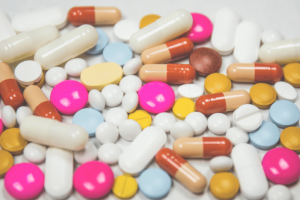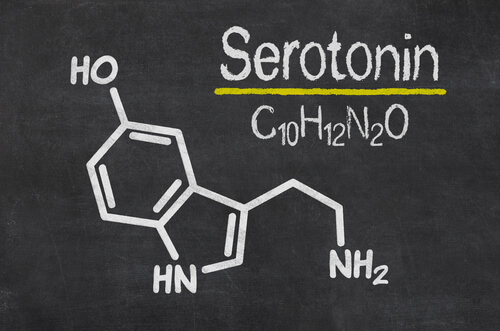Selective Serotonin Reuptake Inhibitors (SSRIs)


Written and verified by the psychologist Sergio De Dios González
In the last few decades, many studies have shown that certain medications can enhance the effects of therapeutic interventions and reduce the intensity and frequency of psychiatric symptoms. One such class of medications is selective serotonin reuptake inhibitors (SSRIs), mainly used to treat depression.
You’ve probably heard of a few of the following before: citalopram, escitalopram, fluoxetine, paroxetine, setraline, etc. Sound familiar? SSRI refers to medications typically used to treat depression, anxiety disorders, and personality disorders.
Medication for depression
However, SSRIs aren’t the only antidepressants that exist. Antidepressants were introduced into the field of clinical psychiatry in 1957. In the following decade, tricyclic antidepressants (TCAs) and monoamine oxidase inhibitors (MAOIs) were commonly used.

TCAs reduce or improve depressive symptoms in over 65% of cases. However, they have a lot of side effects, a disadvantage compared to other antidepressants. Unlike stimulants (amphetamines, methylphenidate, etc.), antidepressants only improve the mood of people who are already depressed. They don’t elevate mood in people without depression.
Types of antidepressants
The following are the most common types of antidepressants today:
- SSRIs: inhibit the reabsorption of serotonin into the presynaptic cell (more detail below).
- TCAs: derive their name from their chemical structure.
- Irreversible and reversible MOAIs: inhibit the enzyme monoamine oxidase, responsible for metabolizing biogenic amines.
- Serotonin-norepinephrine reuptake inhibitors (SNRIs): inhibit the reabsorption of both serotonin and norepinephrine into the presynaptic cell.
- Noradrenergic and specific serotonergic antidepressants (NaSSAs): increase the release of noradrenaline and serotonin in the synaptic cleft, or the space between synapses.
- Norephinephrine reuptake inhibitors (NRIs): inhibit the reabsorption of norepinephrine into the presynaptic cell.
- Dopamine reuptake inhibitors (DRIs): inhibit the reabsorption of dopamine into the presynaptic cell.
This article will focus on SSRIs. But before we get into how SSRIs work, we must understand what serotonin is.
Serotonin, the feel-good neurotransmitter
Serotonin is a neurotransmitter. It’s a chemical substance produced by the human body that transmits signals between neurons. Researchers consider it to be the substance responsible for keeping people’s moods balanced. Thus, a deficit can lead to depression.
Serotonin modulates and inhibits behavior and affects most brain functions. Some call it the “happy brain chemical” or the “feel-good neurotransmitter.” In addition, serotonin influences sleep, mood, emotions, and depressive states. It also affects blood vessels and heart rhythm.
There is a close link between serotonin and depression. However, scientists still aren’t sure if low levels of serotonin contribute to depression, or if depression reduces serotonin levels.

How do SSRIs work?
In the brain, presynaptic neurons release neurotransmitters like serotonin into the synaptic cleft. That’s the space between neurons. Then they attach to receptors on postsynaptic neurons to pass along the signal.
During the process of reuptake, the neurotransmitter is reabsorbed into the presynaptic cell to be used again. SSRIs block the reuptake of serotonin. Therefore serotonin levels increase in the synaptic cleft, ultimately reducing the number of serotonin receptors. Due to the reduction in serotonin receptors, the presynaptic neuron releases more serotonin into the synapse.
The increase of serotonin in the synaptic cleft can improve the person’s mood. SSRIs are selective because they affect mainly serotonin, not other neurotransmitters.
Side effects of SSRIs
All SSRIs work in a similar way. Like with all medications, there are common side effects associated with SSRIs. However, that doesn’t mean they’ll always occur. In fact, some side effects disappear after the first few weeks of treatment, while others might make your doctor switch your medication. If you can’t tolerate one SSRI, you might tolerate another, since their chemical composition varies.
Possible side effects include:
- Drowsiness.
- Nausea.
- Dry mouth.
- Insomnia.
- Diarrhea.
- Nervousness, agitation, or restlessness.
- Dizziness.
- Sexual dysfunction, including diminished libido, inability to achieve orgasm, and erectile dysfunction.
- Headaches.
- Blurry vision.

To recap, SSRIs are designed for depression in particular, but can also help treat anxiety and OCD. While there are side effects, they’re minor compared to other antidepressants like MOAIs and TCAs. If you think that you might need to start taking antidepressants, you should consult your doctor first. Remember that self-medication can be very dangerous.
In the last few decades, many studies have shown that certain medications can enhance the effects of therapeutic interventions and reduce the intensity and frequency of psychiatric symptoms. One such class of medications is selective serotonin reuptake inhibitors (SSRIs), mainly used to treat depression.
You’ve probably heard of a few of the following before: citalopram, escitalopram, fluoxetine, paroxetine, setraline, etc. Sound familiar? SSRI refers to medications typically used to treat depression, anxiety disorders, and personality disorders.
Medication for depression
However, SSRIs aren’t the only antidepressants that exist. Antidepressants were introduced into the field of clinical psychiatry in 1957. In the following decade, tricyclic antidepressants (TCAs) and monoamine oxidase inhibitors (MAOIs) were commonly used.

TCAs reduce or improve depressive symptoms in over 65% of cases. However, they have a lot of side effects, a disadvantage compared to other antidepressants. Unlike stimulants (amphetamines, methylphenidate, etc.), antidepressants only improve the mood of people who are already depressed. They don’t elevate mood in people without depression.
Types of antidepressants
The following are the most common types of antidepressants today:
- SSRIs: inhibit the reabsorption of serotonin into the presynaptic cell (more detail below).
- TCAs: derive their name from their chemical structure.
- Irreversible and reversible MOAIs: inhibit the enzyme monoamine oxidase, responsible for metabolizing biogenic amines.
- Serotonin-norepinephrine reuptake inhibitors (SNRIs): inhibit the reabsorption of both serotonin and norepinephrine into the presynaptic cell.
- Noradrenergic and specific serotonergic antidepressants (NaSSAs): increase the release of noradrenaline and serotonin in the synaptic cleft, or the space between synapses.
- Norephinephrine reuptake inhibitors (NRIs): inhibit the reabsorption of norepinephrine into the presynaptic cell.
- Dopamine reuptake inhibitors (DRIs): inhibit the reabsorption of dopamine into the presynaptic cell.
This article will focus on SSRIs. But before we get into how SSRIs work, we must understand what serotonin is.
Serotonin, the feel-good neurotransmitter
Serotonin is a neurotransmitter. It’s a chemical substance produced by the human body that transmits signals between neurons. Researchers consider it to be the substance responsible for keeping people’s moods balanced. Thus, a deficit can lead to depression.
Serotonin modulates and inhibits behavior and affects most brain functions. Some call it the “happy brain chemical” or the “feel-good neurotransmitter.” In addition, serotonin influences sleep, mood, emotions, and depressive states. It also affects blood vessels and heart rhythm.
There is a close link between serotonin and depression. However, scientists still aren’t sure if low levels of serotonin contribute to depression, or if depression reduces serotonin levels.

How do SSRIs work?
In the brain, presynaptic neurons release neurotransmitters like serotonin into the synaptic cleft. That’s the space between neurons. Then they attach to receptors on postsynaptic neurons to pass along the signal.
During the process of reuptake, the neurotransmitter is reabsorbed into the presynaptic cell to be used again. SSRIs block the reuptake of serotonin. Therefore serotonin levels increase in the synaptic cleft, ultimately reducing the number of serotonin receptors. Due to the reduction in serotonin receptors, the presynaptic neuron releases more serotonin into the synapse.
The increase of serotonin in the synaptic cleft can improve the person’s mood. SSRIs are selective because they affect mainly serotonin, not other neurotransmitters.
Side effects of SSRIs
All SSRIs work in a similar way. Like with all medications, there are common side effects associated with SSRIs. However, that doesn’t mean they’ll always occur. In fact, some side effects disappear after the first few weeks of treatment, while others might make your doctor switch your medication. If you can’t tolerate one SSRI, you might tolerate another, since their chemical composition varies.
Possible side effects include:
- Drowsiness.
- Nausea.
- Dry mouth.
- Insomnia.
- Diarrhea.
- Nervousness, agitation, or restlessness.
- Dizziness.
- Sexual dysfunction, including diminished libido, inability to achieve orgasm, and erectile dysfunction.
- Headaches.
- Blurry vision.

To recap, SSRIs are designed for depression in particular, but can also help treat anxiety and OCD. While there are side effects, they’re minor compared to other antidepressants like MOAIs and TCAs. If you think that you might need to start taking antidepressants, you should consult your doctor first. Remember that self-medication can be very dangerous.
This text is provided for informational purposes only and does not replace consultation with a professional. If in doubt, consult your specialist.







